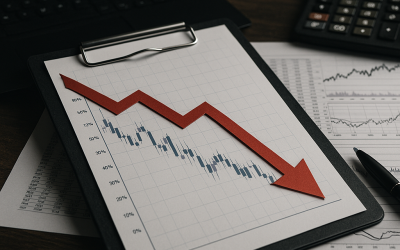Prime Day 2025 Proves Amazon’s Real Power Is Data Extraction, Not Discounting
Prime Day 2025 has come and gone, and while headlines tout record-breaking sales and deep discounts, the real story is buried beneath the surface: Amazon’s true dominance is built on its ability to extract, analyze, and weaponize consumer data at scale. This article will dissect how Prime Day functions as a massive data acquisition engine, why this matters more than fleeting price cuts, and what this means for competitors, brands, and consumers alike.
The Illusion of Discounts: What Prime Day Really Sells
On the surface, Prime Day is a global shopping event promising limited-time deals and exclusive offers to Amazon Prime members. The narrative is simple: consumers win with discounts, and Amazon wins with sales volume. But this is a distraction. The discounts are often marginal, with many products seeing price drops that are either temporary or artificially inflated beforehand to create the illusion of savings.
What’s overlooked is that every click, search, wishlist addition, and abandoned cart is meticulously logged. Prime Day is not just about moving inventory—it’s about capturing intent signals at a scale unmatched by any other retailer. Amazon uses this event to:
- Map consumer preferences across millions of SKUs and categories
- Test price elasticity and promotional effectiveness in real time
- Identify emerging trends, new product interests, and regional demand spikes
- Correlate browsing and purchasing behaviors with demographic and psychographic data
The result? Amazon’s data lake grows exponentially, feeding algorithms that refine everything from supply chain logistics to recommendation engines and ad targeting. The discounts are bait; the data is the catch.
Data Extraction at Scale: How Amazon Turns Clicks into Competitive Advantage
Every interaction on Prime Day is a data point. Amazon’s systems ingest this information to power a feedback loop that continuously improves its business. Consider the following:
- Personalization: Amazon’s recommendation algorithms become sharper with each Prime Day, learning what drives impulse buys, what stalls conversions, and which products are cross-shopped.
- Inventory Optimization: Real-time demand signals allow Amazon to fine-tune its inventory, reducing overstock and out-of-stock scenarios, and optimizing fulfillment routes for cost and speed.
- Advertising Intelligence: Amazon’s advertising platform leverages Prime Day data to offer brands hyper-targeted ad placements, driving up ad revenue and giving Amazon a unique edge over traditional retailers and even Google.
- Market Research: By observing which new brands or products gain traction, Amazon can identify acquisition targets, private-label opportunities, or areas to pressure third-party sellers.
Most retailers see sales events as a way to clear shelves. Amazon sees them as a machine for extracting granular, actionable intelligence. This is a systems-level advantage that compounds with every event.
The Real Beneficiaries: Amazon, Not the Consumer
While consumers may score a few deals, the real winner is Amazon. The company’s ability to harvest and operationalize data from Prime Day extends far beyond the event itself. Here’s how Amazon’s data-centric approach pays dividends:
- Customer Lock-in: The more Amazon knows about its customers, the more effectively it can personalize experiences, making it harder for competitors to lure shoppers away.
- Supplier Leverage: Armed with granular sales and demand data, Amazon can negotiate better terms with suppliers and push its own private-label products more aggressively.
- Advertising Dominance: With a treasure trove of intent data, Amazon’s ad platform becomes the go-to for brands seeking measurable ROI, further entrenching Amazon’s ecosystem.
- AI and Automation: The data harvested feeds Amazon’s AI initiatives, from Alexa to warehouse robotics, driving efficiency and innovation at a pace rivals can’t match.
Consumers, meanwhile, trade their data for fleeting discounts—often without understanding the long-term implications for privacy, competition, and consumer choice.
Implications for Brands and Competitors: Adapt or Be Marginalized
For brands, Prime Day is a double-edged sword. Participation can drive a surge in sales and visibility, but it comes at the cost of margin erosion and data dependency. Every transaction on Amazon’s platform enriches Amazon’s understanding of the market, not the brand’s. Brands are effectively renting access to customers while ceding strategic insight to Amazon.
Competitors, from Walmart to Shopify merchants, face a steeper challenge. They lack the scale and sophistication of Amazon’s data infrastructure. Their sales events may generate revenue, but they don’t produce the same depth of actionable intelligence. Without a comparable data strategy, they’re fighting blind while Amazon is playing chess with a full view of the board.
To survive, brands and competitors must:
- Invest in their own data collection and analytics capabilities
- Build direct-to-consumer channels to regain control over customer relationships and data
- Develop unique value propositions that Amazon can’t easily replicate or commoditize
- Advocate for regulatory scrutiny of Amazon’s data practices to level the playing field
The Long-Term Consequences: Data Monopoly and Market Power
Amazon’s relentless data extraction isn’t just a business strategy—it’s a systemic risk. As Amazon amasses more consumer and market data, its predictive power and influence over commerce grow. This raises critical questions:
- How much market power should one company wield based on proprietary data?
- What are the privacy implications for consumers who are largely unaware of how their data is used?
- Will regulators step in to address data monopolies, or will Amazon’s advantage become insurmountable?
The answers will shape the future of retail, competition, and consumer rights. For now, Amazon’s data flywheel spins faster with each Prime Day, widening the gap between itself and the rest of the market.
Conclusion
Prime Day 2025 isn’t about discounts—it’s about data. Amazon’s true power lies in its ability to extract, analyze, and leverage consumer information at a scale no competitor can match. For brands, competitors, and consumers, the implications are profound: adapt your data strategy, understand the trade-offs, and recognize that in the age of Amazon, the real value isn’t in the deal—it’s in the data you leave behind.



0 Comments